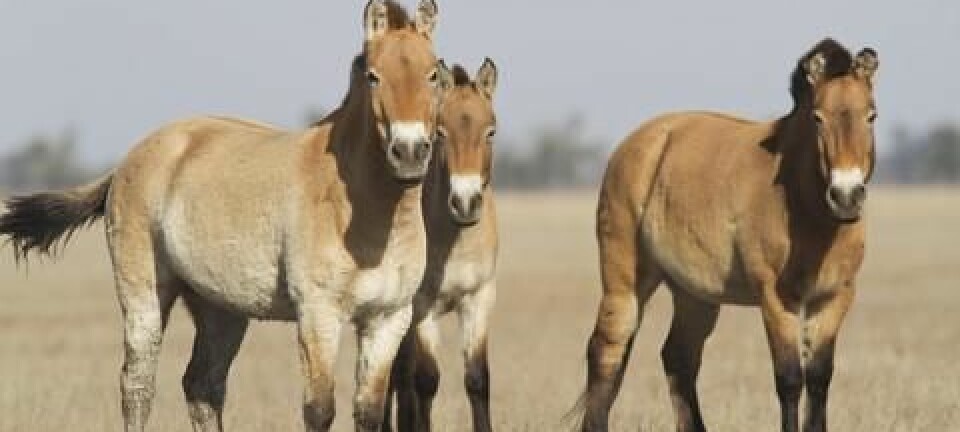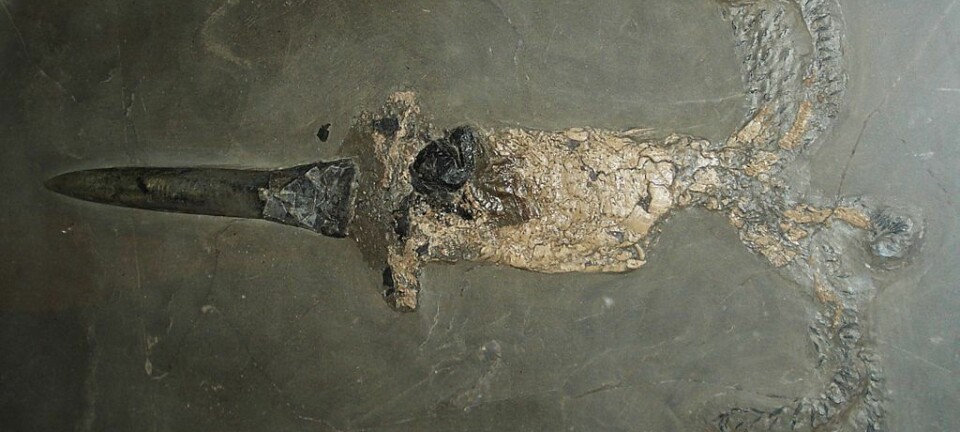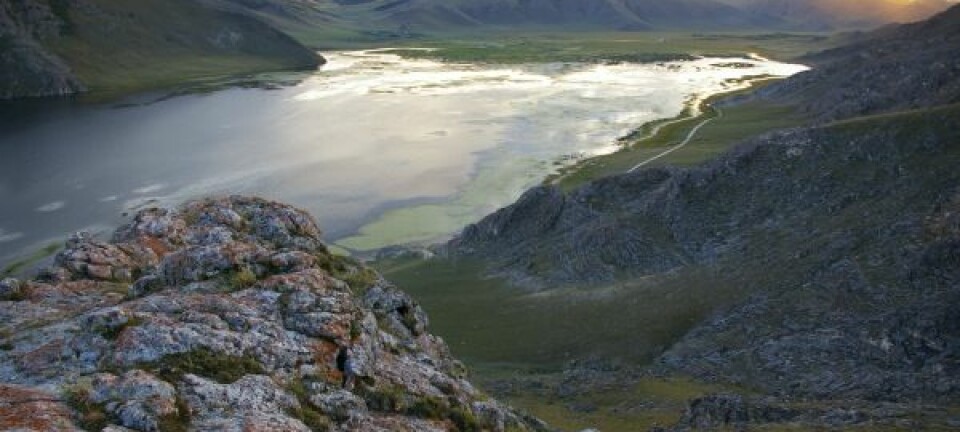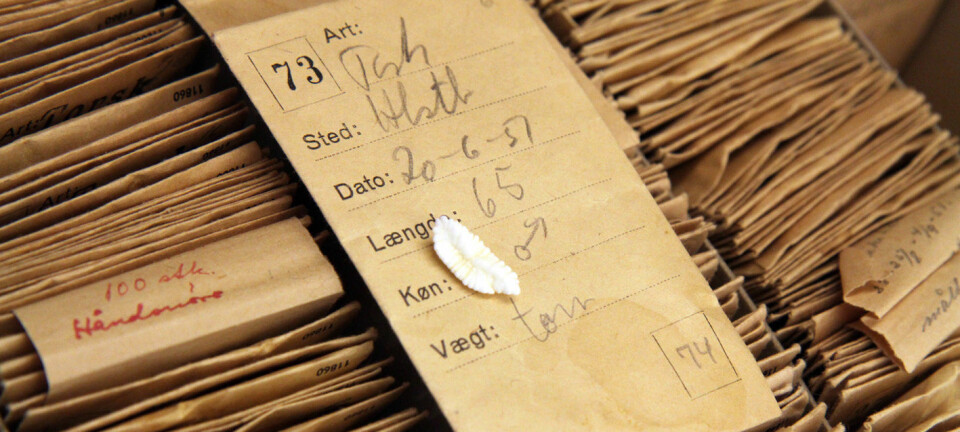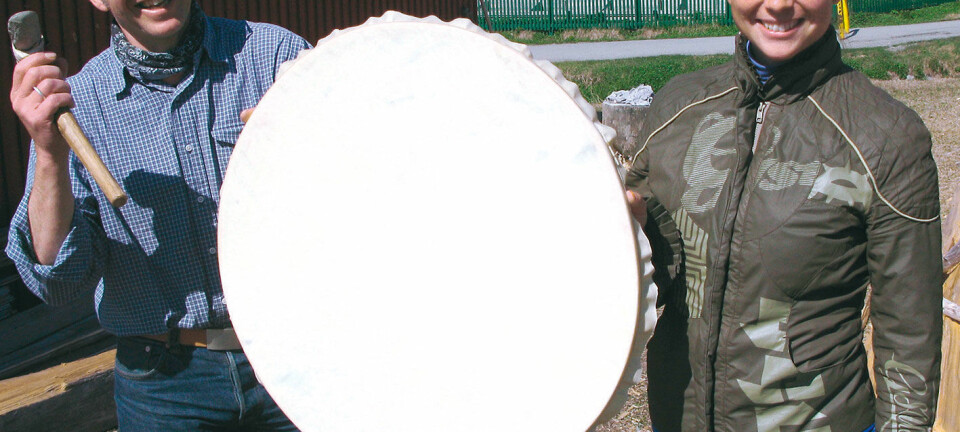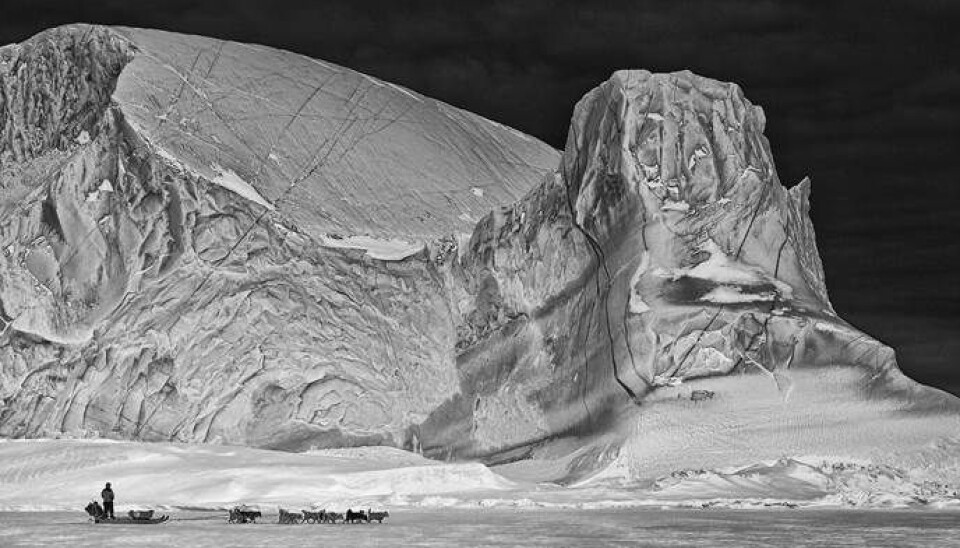
Gigantic DNA-study reveals the rise and downfall of prehistoric Eskimos
In the largest study of ancient DNA from the Arctic, Danish scientists have mapped the story of the prehistoric people who lived in one of the harshest areas of the world.
With fossil DNA from more than 160 prehistoric Arctic individuals, a Danish-led international study investigated the history of humans in one of the most ruthless parts of the planet: the frozen plains stretching from Alaska to Greenland.
Until about 6,000 years ago the enormous land area was untouched by humans -- but even though it was the last area to be colonised by humans, the history of the population has been debated for nearly a century.
Now the scientists are mapping the entire human history by comparing genetic material from fossils with contemporary human DNA.
"It is the largest paleogenetic study of its kind ever published," says ph.d. Maanasa Raghavan from the Centre for GeoGenetics at University of Copenhagen. She co-authored the study together with Professor Eske Willerslev who is from the Centre for GeoGenetics as well.
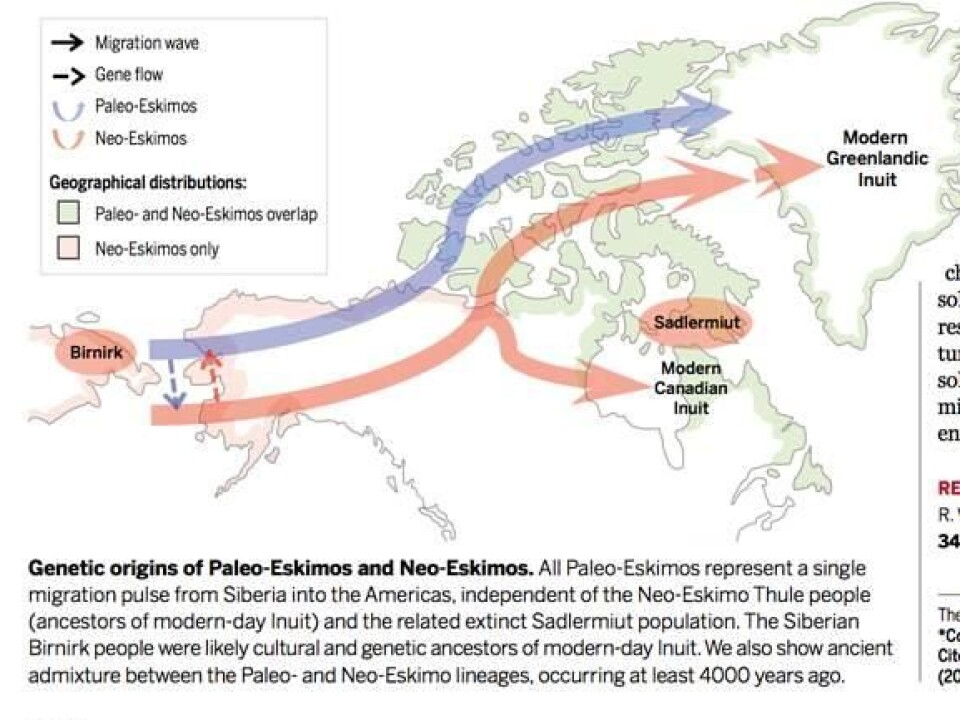
"The extent of the study provides a new and valuable approach to understanding the history of Arctic populations," writes anthropologist Robert W. Park from the University of Waterloo, Canada, in an article in the journal Science, where the study was published recently.
Collecting DNA from fossils is like time-travel
The study is from the Willerslev laboratory, which in recent years has taken the lead in investigating the genetics of fossils by using original DNA from ancient relics.
In 2010 they mapped the world's first genome of a prehistoric human -- a 4,000 year old 'Paleo-Eskimo' from Greenland.
Now, the technology has evolved to the extent that it has become possible to identify several fossil genomes, allowing for the study of genetic changes over time and place in prehistoric times.
It is almost like being able to travel back in time and taking swabs for paternity testing.
26 fully mapped fossil genomes
In order to map the Arctic peoples' history, the scientists are scrupulously investigating everything they can find, including human hair, teeth, and bones from collections in Greenland, Alaska, Canada, and Siberia.
This might sound simple, but “human remains are very rare, because there are not many excavated sites available,” says co-author Morten Meldgaard, head of the Natural History Museum of Denmark.
In total the scientists managed to find and identity DNA from 169 human remains -- of which 26 are full genomes.
These have been compared to seven other genomes from living people in the same area including Inuits, Siberians and North American Indians.
In the Arctic ideas move, not people
The analysis draws a concrete picture of how the Arctic was colonised throughout time. This has happened twice from different ethnic groups in Siberia. The 'Palaeo-Eskimos' arrived about 6,000 years ago and stayed up until the Thule culture arrived and replaced them.
The big surprise has been, that the DNA samples show that all the various Paleo-Eskimo cultures carry the same DNA, they are in fact, the same people.
The genetic data shows that the original group managed to survive for more than 4,000 years in the extreme environment by developing lifestyles matching the conditions. They shifted from primarily rural hunters of reindeer and muskox hunters to marine hunters of seals and walrus.
The radical change in tool use for these different ways of hunting have previously lead scientists to believe that they were different populations altogether.
"This is a very significant finding, because it shows that it can be super dangerous to use tools as an indication of different ethnic groups," emphasise Willerslev.
The archaeological picture is completely different from how we have evolved in Europe from hunters to farmers. The latest research has shown that this shift was due to culture changes within populations, where the farmers spread and by this, replacing the existing hunters.
"In the Arctic the change of culture occurred, because new ideas, and not, because people spread," says Rhagavan.
Why the Paleo-Eskimos were inbred
When the scientists looked at mitochondrial DNA, they only found the same genetic marker (haplotype), carried by all Paleo-Eskimo through time.
"I've never seen anything like it in any population in the world," says Willerslev and continues:
"It’s like an ‘Arctic Eve’. They all came from her and covered huge land areas in Alaska, Canada and Greenland." he says. This also be one of the explanation for why Palaeo-Eskimos were a very inbred population.
Arctic, conservative ‘hobbits’?
While the scientists were studying hereditary materials they stumbled over yet another surprise.
It seems that the Paleo-Eskimos kept themselves completely genetically isolated. In other words; they never had sex with other people outside their culture.
"It is surprising that there were people, who covered such a large area, neighbouring Indians over thousands of years, and they managed to stay inbred. I did not expect this result from the study,” says Willerslev.
"I think it is related to the fact that they had very different mindsets. Their religion was different, their resources were different and so on," says Dr. William Fitzhugh of the Smithsonian Institution in Washington, USA, who is a specialist in Arctic cultures.
»As a joke I call then the Arctic hobbits, because they were a very funny, conservative people, that we have only just started to know and understand,” he says.
No one left to ask
Unfortunately, there are no longer any Palaeo-Eskimos left to ask, because they disappeared from the surface of the planet over 700-800 years ago.
One of the big questions now is why the Palaeo-Eskimos died out after over 4,000 years. One possibility explanation is the arrival of the Thule culture, which roughly fits in time.
“Paleo-Eskimos could not match the Thule culture in terms of organisation and economy. The Thule culture spread from Alaska to Greenland in less than 100 years," explains William Fitzhugh.
“A prehistoric arctic genocide may be a possible explanation to their disappearance or maybe a disease originating from either the Thule culture or the Vikings." he says.
A new chapter for genetic research
Now that the Paleo-Eskimos’ origins have been mapped, scientists are left to contemplate their suddenly downfall. With the new genetic evidence, they may find answers in the future.
“Even though the study is very large and comprehensive, it is only the first chapter in a bigger story about the genetic history of the the Arctic people,” says William Fitzhugh.
--------------
Read the original story in Danish on Videnskab.dk
Translated by: Louisa Field
